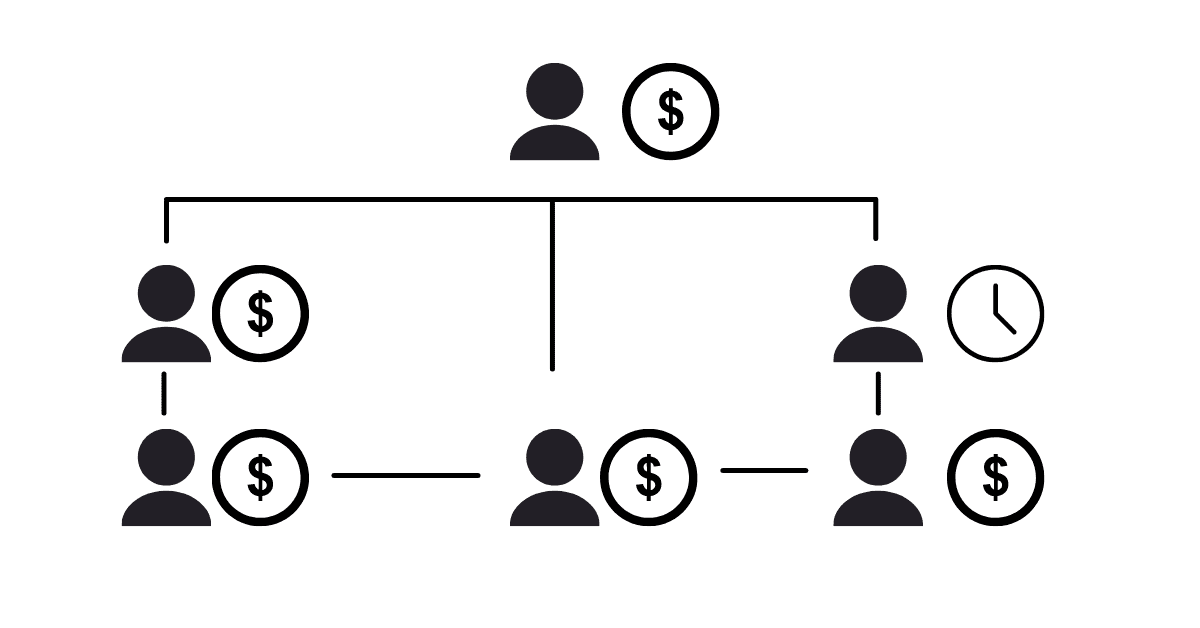
When you think of a company org chart, you probably picture a bubble chart that lists out who answers to who within your lawn or landscaping business and what they do.
However, an organizational structure can be so much more than just who does what within a company. Danny Kerr, co-founder of Breakthrough Academy, says org charts should also highlight who delivers what.
“What I mean by that is, every job should have a number or a deliverable that they’re in charge of achieving,” Kerr says. “If not, it’s easy to add overhead without knowing whether or not that person is going to actually provide an ROI.”
Contractors can be growing tremendously with their revenue, but if each position isn’t tied to clear responsibilities and ROI, it’s hard to know how much ROI is being generated per person.
While determining the ROI for your field crews is fairly straightforward, adding on administrative positions can be trickier to determine what they’re delivering. Kerry says you need to figure out what your time is actually worth.
“If I’m worth a couple 100 bucks an hour in my time as far as the ROI I bring to the company, why am I doing these jobs that are $20 or $30 an hour jobs?” Kerr says. “I’m actually burning money by doing that and I’m exhausting myself doing things that I’m not even good at anyway.”
By taking the time to consider what your time is worth and where do you provide the best ROI you can determine when it’s time to bring in more people to free you up. Conducting an audit of your time and your team’s time can help you determine if a task needs to be passed on or if a new position needs to be added.
“A very simple way to do it as you write down all the things you do every day,” Kerr says. “Then you circle the stuff that’s highest time consumption and lowest skill. That’s usually an indicator of something that needs to be delegated down to your team, or if your team is full, a new job needs to be created.”
If a new person needs to be added, check their addition against the budget so you can determine how much you need to produce to justify adding the new role.
Some positions to consider adding when you get to the $1 to $10 million range are sales manager, project manager and company administrator.
“Those are three major areas of the business that are vital to really pulling the owner out of the day-to-day,” Kerr says. “Until those three major positions are established with good people, that’s why you see these owners who are constantly like ‘I want to do more, but I’m just stuck doing all these other things every single day.’”
Kerr says regardless of the role an employee is in they should all have a deliverable. Sometimes the biggest ROI is the time they provide to the owner or management team now that the pressure to do other things is removed.
Kerr says org structures need to be integrated into the day-to-day operations. They’re not just something you present to the team in January.
“Everybody should have a number that at some level contributes to the quality, volume or profit of the company and it’s usually those three metrics that provide value to the organization,” Kerr says.
With an org structure, you want to marry in the workflow from lead to invoice and the deliverable.
“It’s almost like a machine where every part knows what it does and knows why it does it and connected next part nicely,” Kerr says. “You can have a really good streamlined workflow. You can see, basically, a good predictable amount like revenue come out from a machine that you built.”
Not having expectations and parameters results in no accountability. This is why Kerr says employment agreements are so important. They reflect the organizational structure’s deliverable and bring it to the employee’s day-to-day attention.
“We need to detail and document exactly what is expected, and basically make sure that everybody knows what they have to do and they can sign off on it formally,” Kerr says.
Once everyone knows what deliverables they are responsible for conduct goal setting and review on a weekly, bi-weekly, or monthly basis. This is where managers and their employees can look at where they are on their numbers and where they need to be and there can be a level of coaching in the meeting.

